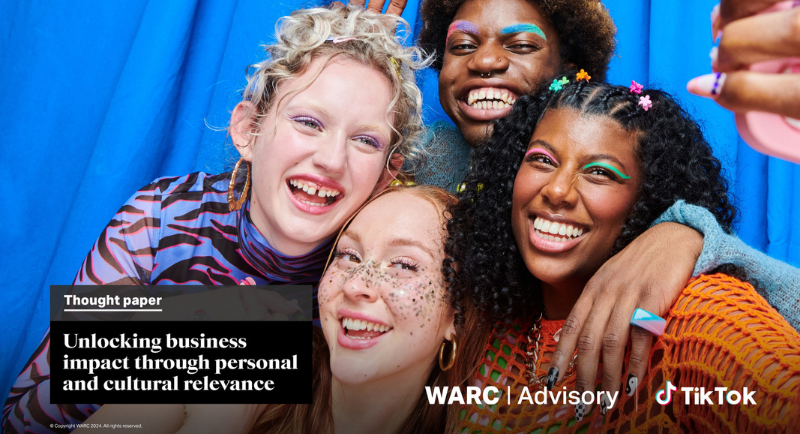TikTok and WARC Advisory have partnered on a thought paper that examines how brands can achieve positive business effects by focusing on relevance.
The power of connective media: Unlocking impact through personal and cultural relevance paper also provides a framework for creating content and ads that are culturally and personally relevant to consumers and their communities.
The paper acknowledged that audiences are spread across countless channels, platforms, and touchpoints. Dr Marcus Collins, in a WARC Talk, suggested consumers have the power to engage only with content that aligns with their specific interests, values, and passions, not just their demographic profile.
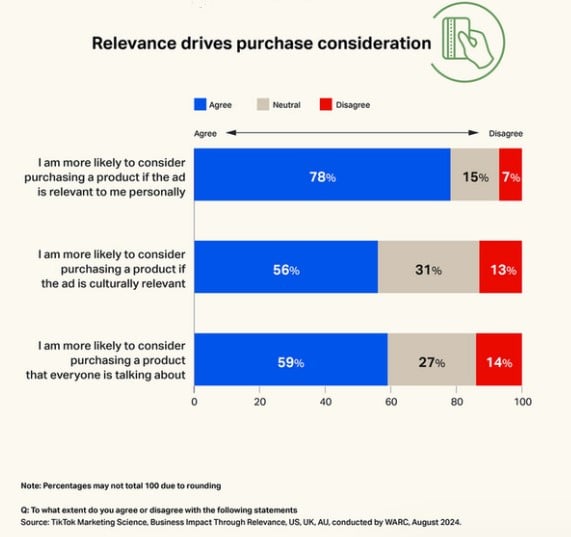
It also found marketers need a clear viewpoint of the consumer and the cultural communities they are a part of to identify where the brand can organically intersect and engage.
The study was conducted among social and video platform users, ages 18 to 45, in the US, UK and Australia, alongside insights from in-depth interviews with senior marketers and industry experts.
Analysis highlights brands that pursue personal and cultural relevance can unlock new opportunities for growth, with 78% of social and video platform users surveyed saying their purchase likelihood would increase if ads were personally relevant, and 56% felt the same if an ad was culturally relevant. Harnessing relevance also delivers outsized brand impact, the report finds, and brands with high cultural relevance grow nearly 6x more than brands with low levels of cultural relevance, according to Kantar.
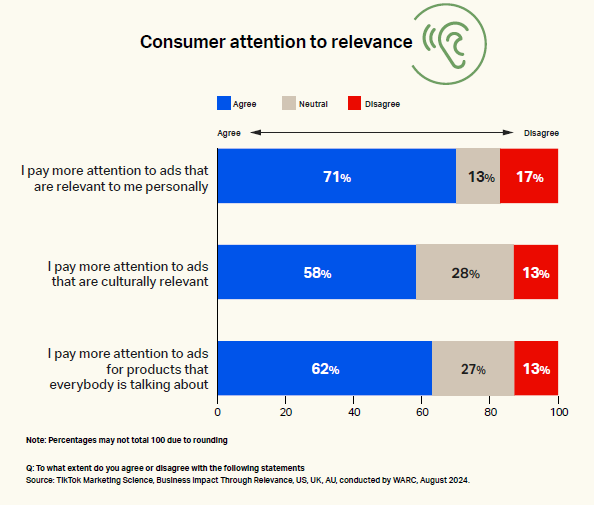
The TikTok and WARC report illustrates the importance of relevance from a cultural and personal perspective. 71% of users surveyed agreed they are more likely to pay attention when ads are personally relevant, while 58% do when ads are culturally relevant. It uncovers what culturally and personally relevant brand content looks and feels to social and video platform users.

Sofia Hernandez, global head of business marketing, TikTok
“The insights in this report allow marketers to tap into shared values and lived experiences to foster connections that are lasting, resonant, and meaningful, and keep people engaged well beyond moment-led interactions,” Sofia Hernandez, global head of business marketing, TikTok, said.
“We’re excited to share this analysis and help brands unlock the full power of relevance in today’s fast-evolving media landscape.”
Alexis Wolf, head of advisory, Americas WARC, added: “Relevance is an ambition worth pursuing – brands who are willing to dive into its nuance will achieve a closer connection to consumers that translates to tangible business results. We conducted this study to demystify what it means to make relevant content on social”

Alexis Wolf, head of advisory, Americas WARC
Cultural relevance
Tapping into emerging topics and trends is the most important way brands can be culturally relevant, no matter the generation. But the findings also show that reception of cultural relevance is nuanced between different generations.
Social media and video platform users agree being timely and topical are the most important ways content can be culturally relevant. However, Gen Z respondents ages 18-24 were 38% more likely than those ages 25-45 to consider content culturally relevant if it uses the jargon or slang of their communities.
Two-thirds (67%) of all respondents said content is culturally relevant if it updates them on trending topics, while 62% said it is if it showcases topics or issues happening in the moment.
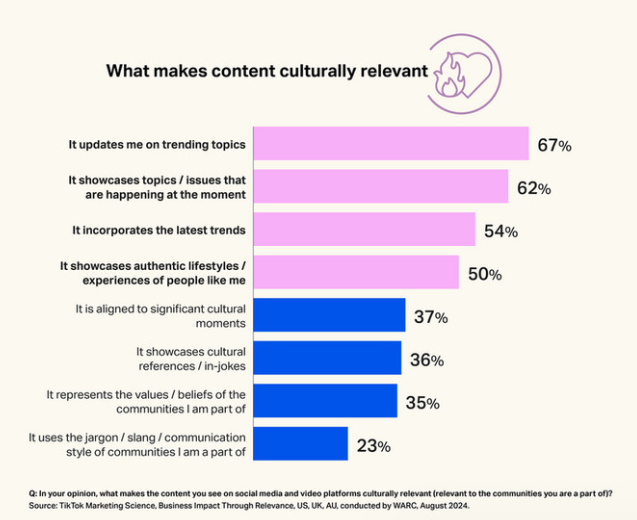
Personal relevance
Relevance is driven by both a personal connection and a shared community. The analysis found that the top reason a brand feels relevant to users is if it understands their needs (45%). Relevance is further driven by a brand’s ability to showcase its personality (40%); by actively engaging with its audience online (38%); and by fostering a sense of community among its followers (34%).
Personality, interests, and passions are themes that drive personal relevance, and the top three drivers across users surveyed were: Humour (55%); content about a topic the user is interested in (50%) and content that incorporated hobbies/passions (43%).
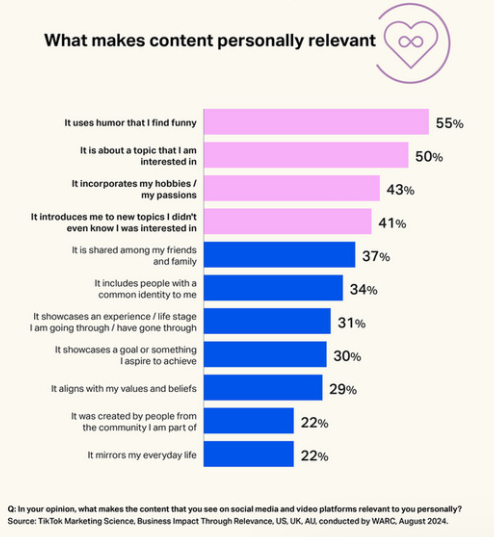
Introducing Planning for Relevance Framework
The thought paper presents a new framework to help brands plan for cultural and personal relevance through a model that suggests brands should:
Be current – Stay in tune with trending moments and topical content with a selective mindset.
Be open – Research online communities to identify key needs and desires.
Be human – Showcase personality and humour to deepen relevance. Partner with creators to make branded content more authentic.
Be engaged – Create opportunities for mutuality. Lean into what’s new (or “new to me”) to reach previously untapped buyers.

